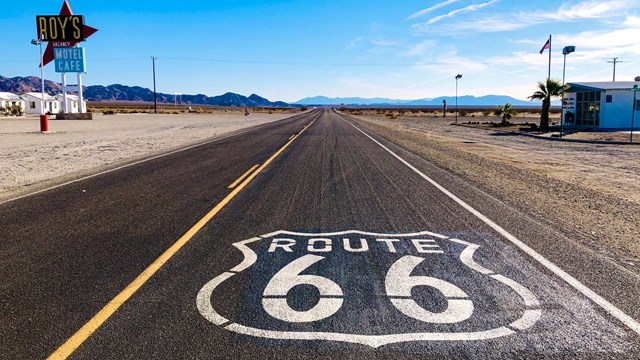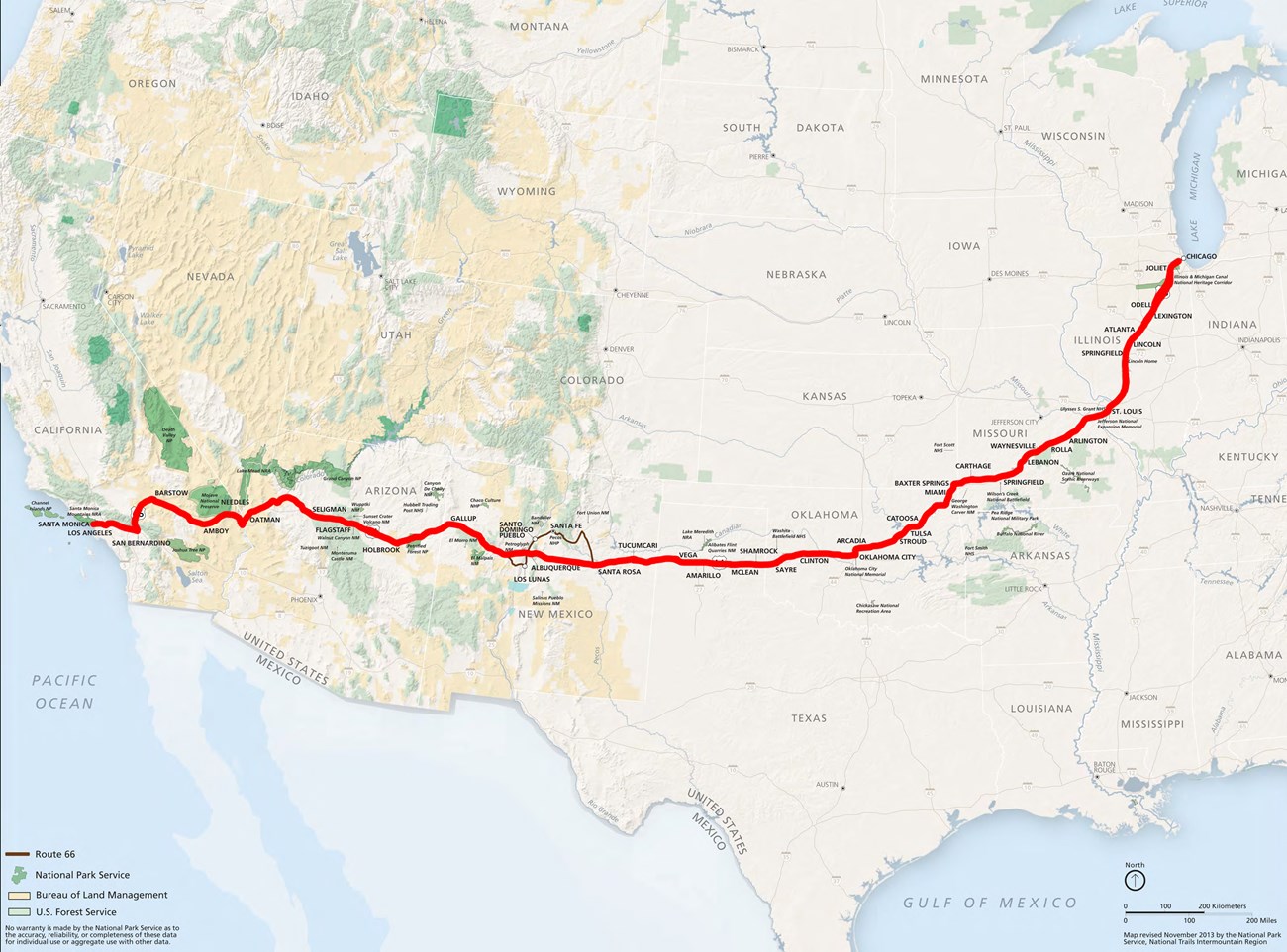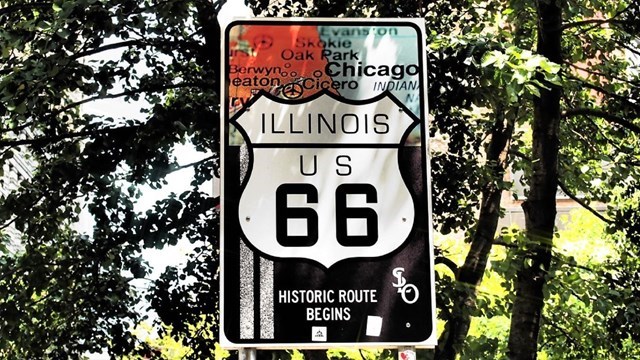Last updated: April 2, 2025
Article
America's Greatest Road

If you've ever heard someone talk about "getting their kicks on Route 66," they're talking about one of America's most famous roads. Route 66 was a huge highway that stretched 2,400 miles from Chicago all the way to Los Angeles, connecting the Great Lakes to the Pacific Ocean. Along the way, it passed through the farmlands of Illinois, the hills of Missouri, the plains of Oklahoma and Texas, and the deserts of New Mexico, Arizona, and California.
Route 66 officially opened in 1926 as part of America's first real highway system. It quickly became popular because it was advertised as the shortest and most scenic way to drive west. Small towns along the route saw this as their chance to make money, and soon the road was lined with gas stations, motels, and restaurants.

During the Great Depression in the 1930s, something unexpected happened. While times were tough everywhere, Route 66 actually got busier. Many poor families who had lost their farms headed west along the road, hoping to find a better life in California. This sad time was famously written about in John Steinbeck's book "The Grapes of Wrath."
World War II changed things again. The road became really important for moving soldiers and military supplies across the country. After the war ended, Americans had more cars and more free time than ever before. Families would pile into their cars and drive Route 66 to visit places like the Grand Canyon and the new Disneyland in California. By 1955, Americans owned twice as many cars as they had just ten years earlier!
The road's image changed too. Instead of being known as the road of desperate travelers, it became famous as the highway of adventure and fun. Bobby Troupe wrote a catchy song called "Route 66" that everyone knew. There was even a popular TV show about two guys having adventures along the highway.
But the very things that made Route 66 popular also led to its end. The road got so crowded that in 1956, President Eisenhower ordered the building of bigger, faster highways - the interstate system we use today. Over the next 30 years, five new interstates replaced different parts of Route 66. By 1985, Route 66 was officially "retired" as a highway.

But that wasn't the end of the story. People realized how important Route 66 was to America's history. Groups formed to save and protect the old road. Congress passed laws to help preserve it, and the National Park Service now helps take care of historic places along the route.
Today, you can still drive many parts of the original Route 66. While you won't find as many small businesses, you can still visit old-fashioned diners, motor courts (early motels), and museums. The road tells the story of how America changed from the 1920s to today, and helps us remember an important part of our country's past.
